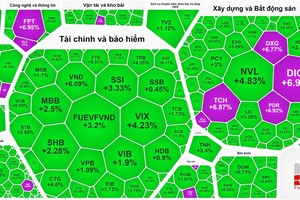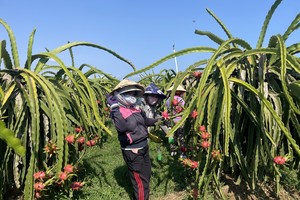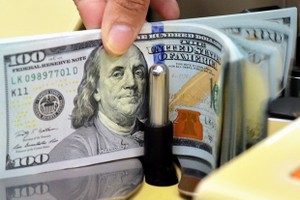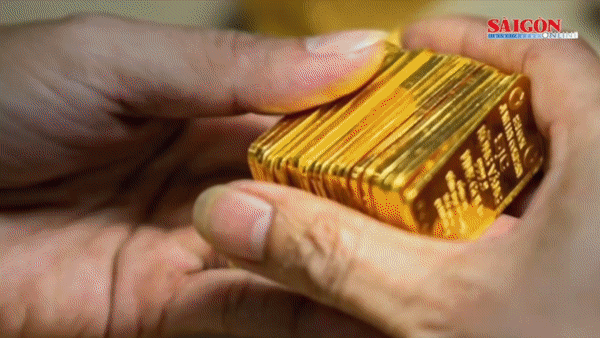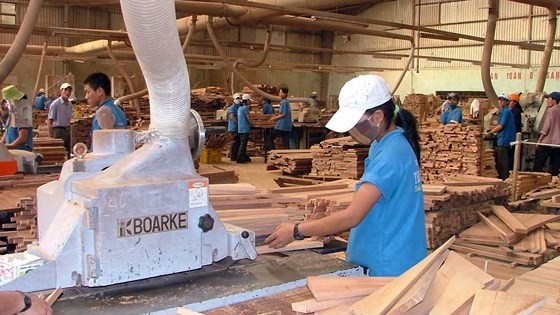
Deputy Minister of the Ministry of Agriculture and Rural Development Ha Cong Tuan said that wood and forestry products export turnover reached US$9.4 billion last year, accounting for more than 25 percent of total exports of agricultural industry with trade surplus hitting $7.1 million. Processing and exporting wood and forestry products have brought the highest export value for agricultural industry and contributed to economic growth of the country.
There are more and more firms investing in processing wood companies. Figures from the Vietnam Administration of Forestry show that there are 4,500 wood and forestry products processing companies so far. Of which private companies accounts for 95 percent and more than 1,800 firms processing wood for export, up more than 300 firms compared to that in 2017.
In 2005, Vietnamese wood products were exported to 60 countries and territories. By 2018, they have been exported to 120 countries and territories with best-selling products, including high quality interior furniture like tables, chairs, cabinets, beds, doors, windows and wood flooring and outdoor furniture like tables, chairs, sunbathing beds, swings and garden parasols. Wood manufacturers have applied technology in production so as to create high quality products with new structure and design.
As for wood and forestry products export, Vietnam is currently the fifth largest in the world, the second largest in Asia and the largest exporter in South East Asia. The country’s main markets are the US, Japan, China, South Korea and the EU.
Prime Minister Nguyen Xuan Phuc highly appreciates the contribution of the wood processing industry to the country’s economic growth and the potential of the industry whose export turnover ranked sixth among export products and expects Vietnam to become the world’s center of wood furniture, bringing in $18-20 million by 2015.
Unfortunately, thousands of wood processing companies have been facing several difficulties due to raw material crunch. If the problem of raw material shortage cannot be solved, it is unfeasible for Vietnam to become the center of wood furniture of the world.
According to Do Thi Bach Tuyet, CEO of Woodland JSC, her company as well as other companies in the wood processing industry has been facing difficulties in buying raw material wood as traders collect raw wood heavily then export. Meanwhile, neighboring countries including Laos, Cambodia, Myanmar, India and China have had policies to tighten forest exploitation, causing a significant shortage of raw wood, raising competition pressure on input material for wood processing firms. Therefore, the Government should have solutions to deal with this situation.
Mr. Nguyen Ton Quyen, chairman of Vietnam Timber and Forest Product Association, said that earlier, local companies had to import raw wood in order to lessen pressure on forest exploitation. However, dependence on imported raw wood causes high expenses and poor competitiveness. Therefore, it is necessary for wood processing firms to take initiative in domestic raw wood, which means that they should grow trees for logging. Last year, total raw wood supply was more than 40 million cubic meters of log wood, of which domestically-grown wood was around 30 million cubic meters, accounting for 75 percent. The achievement of Vietnam's wood processing industry is to improve the rate of domestically-grown timber use, thereby increase the added value of raw material supply, he said.
However, the country has to import up to 8-9 million cubic meters of log wood annually (imported a record high of 9.7 million cubic meters of log wood in 2018). Due to high demand for raw wood, many firms want to invest in forest plantation in order to secure material supply, motivating the development of plantation forest in Vietnam. For instance, Hao Hung Company wants to invest in 100,000 hectares of plantation forest; Nafoco, Woodlands and Scansia Pacific want to grow around 30,000 to 50,000 hectares of plantation forest each. Nevertheless, they have not found suitable land yet as provincial governments have not shown statistical table of types of land allocated for firms to account for investment efficiency as well as have not granted certificate of land use right for residents for firms to cooperate with them in forest plantation.
Mr. Huynh Van Thanh, vice chairman of Handicraft and Wood Industry Association of HCMC, said that in order to take initiative in raw wood supply the Government should have policy to attract investment in forest plantation and expand the area of plantation forest. In addition, it should open large plantation forest whose quality meets export standard and has sustainable forest certification.




